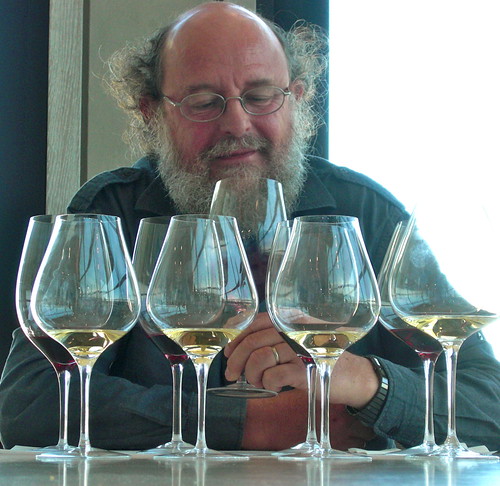
We’re walking through the vineyards on a fine spring day in April. There is no urgency in the Stratus vineyards, no flurry of activity, no pruning quite yet. Everything is left just as it was last winter.
A prolonged spike of heat in Niagara has moved up the growing season for grapevines by two to three weeks. Stratus winemaker, J-L (Jean-Laurent) Groux, isn’t fretting about the early start to the season, in fact he welcomes the extra ripening time at the end of the season. “Early bud break means early ripening,” he says. “Especially for the late varieties.”
Pruning is always late at Stratus, with the tying off of the chosen shoots taking place just before bud break.
Groux is notorious for picking his grapes late into the season, November is ideal for most varieties planted at Niagara-on-the-Lake’s Stratus, but December is not uncommon.

In a year such as 2009, the vintage that Stratus is just releasing now, the cool weather forced winemakers to leave the grapes hanging well into the fall. It was not an easy year to make good wine.
Groux called it a “very wonderful (but) difficult year” with low crop yields (averaging about 1.5 tonnes per acre). The key, he says, was patience in the vineyard, something that Groux has become very good at.
Harvesting began at Stratus on Nov. 2 and didn’t finish for the late ripening varieties until Dec. 13, a day that saw the temperature plunge to -8C (and many other wineries thinking about picking icewine). Groux recalls the Cabernet Sauvignon grape bunches, the last to be harvested, literally falling to the ground. Cabernet Franc was harvested a week earlier with Semillon picked Dec. 2-3.

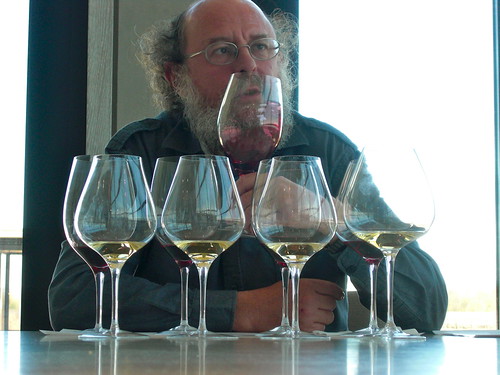
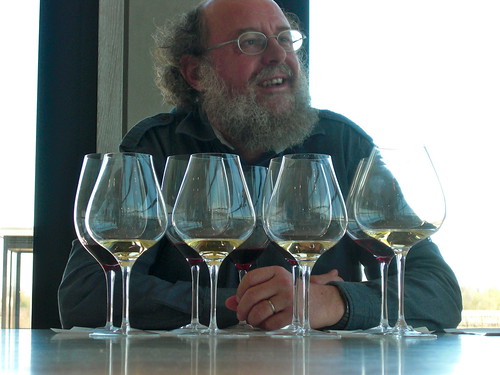 The low yields and late picking are what define the 2009 wines from Stratus. And when you consider the grapes that are grown at Stratus, from Malbec and Syrah to Viognier and Semillon, as well as the more traditional Gamay, Cab Sauv, Cab Franc, Chardonnay and Sauvignon Blanc, there has to be flexibility in the vineyard and careful consideration for picking at optimum ripeness, even if it is in December.
The low yields and late picking are what define the 2009 wines from Stratus. And when you consider the grapes that are grown at Stratus, from Malbec and Syrah to Viognier and Semillon, as well as the more traditional Gamay, Cab Sauv, Cab Franc, Chardonnay and Sauvignon Blanc, there has to be flexibility in the vineyard and careful consideration for picking at optimum ripeness, even if it is in December.
Stratus grows 18 different varieties on its 62-acre estate vineyard. All the wines are trickled down from the assemblage of the flagship Red and White blends that are crafted and selected from the very best lots and barrels on the estate after rigorous tasting trials.
Beginning with the 2009 vintage, Groux has collaborated with winemaker and viticulturist Paul Hobbs to add dimension to Stratus Vineyards’ already impressive portfolio of wines.
Since its inception, the winery has pursued the highest level of quality in all of its operations, and has sought global expertise on many matters, including viticulture, sustainability and winemaking. Advisors have included Jean-Rene Matignon (Bordeaux) and Summit Engineering (Napa).
Hobbs is one of the world’s leading winemaking consultants, and is currently working with wineries in both the northern and southern hemispheres.
His Vina Cobos winery is considered by many to be producing the finest wines in Argentina. He is also the owner/winemaker of Paul Hobbs Winery in California.
Growing up on a working farm in upstate New York, Hobbs experienced first‐hand the influence of terroir on the character of fruit when his father had him taste apples of the same variety grown in different orchards several kilometres apart from one another. The diversity of flavors and textures made an impression on him and would later influence his approach to winemaking.
As a winemaker, Hobbs is highly regarded for his ability to identify exceptional vineyards, and for his pioneering spirit in working innovatively with new and historical sites and regions.
His resume includes being hired by Robert Mondavi for his advanced understanding of oak aging, winemaker for Opus One and Simi wineries, and then consultant to Peter Michael, Fisher, Lewis, Catena and others. He founded Paul Hobbs Winery in 1991 and Vina Cobos in 1999. Twice named Wine Personality of the Year by Robert Parker, Jr., he continues to be a leading consultant winemaker around the globe.
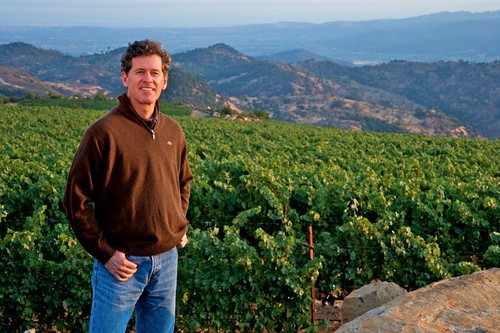
Groux, meanwhile, is a native of France’s Loire Valley who learned his craft in the vineyards of Burgundy and Bordeaux. And while he venerates the traditions of winemaking, he won’t be bound by them.
Groux is open to fresh ideas and to establishing what he calls “new traditions” in grape growing and winemaking. Judged by the age-old standard of “what works best,” these innovations help Groux pursue a very traditional goal – outstanding, age-worthy wines that capture the essence of vintage and vineyard.
Three wines benefited from the collaboration in 2009: The Syrah, Malbec and Chardonnay.

Here’s what I liked from Stratus’s new lineup of wines from a tasting with Groux at the winery (note: both the Stratus White 2008 and Stratus Red were previously tasted and reviewed):
Stratus Viognier 2009 ($32, winery, 89 points) — The grapes for this first vintage of Viognier, planted in 2004, were hand picked on Nov. 17 and spent 640 days in 33% new oak. It is very tight at the moment and opens up slowly in the glass to reveal white flowers, peach, apple, tropical fruits and soft vanilla spices. This is serious stuff on the palate, with a complex array of stone fruits and a touch of grapefruit zest all coming together in the mouth and lifted by searing acidity. Cellar up to three years.
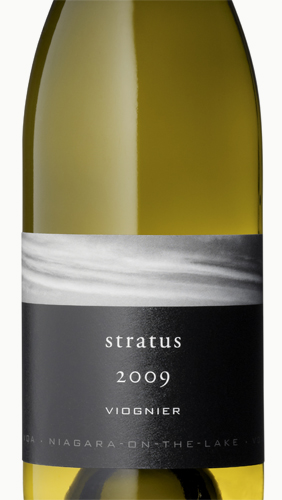 Stratus Semillon 2009 ($32, winery end of April, 91 points) — This vintage of Semillon was harvested on Dec. 2-3 and aged in second vintage French oak barrels for 600 days. It has beautiful aromatics of citrus, apricots, lanolin and subtle spices wafting from the glass. It is a well-structured beauty with poise, texture and balance on the palate that reveals its exotic fruits in layer after layer. Hold this wonderful wine, if you can, and it will reward with time in the cellar.
Stratus Semillon 2009 ($32, winery end of April, 91 points) — This vintage of Semillon was harvested on Dec. 2-3 and aged in second vintage French oak barrels for 600 days. It has beautiful aromatics of citrus, apricots, lanolin and subtle spices wafting from the glass. It is a well-structured beauty with poise, texture and balance on the palate that reveals its exotic fruits in layer after layer. Hold this wonderful wine, if you can, and it will reward with time in the cellar.
Stratus Chardonnay 2009 ($55, June release, 93 points) — A classic Chardonnay that stands among the best in Niagara including Hidden Bench Tete de Cuvee, Les Clos Jordanne, Tawse Quarry Road, and Southbrook Poetica. It was made in a true 50-50 collaboration between Groux and Hobbs, all initiated in the winery, not the vineyard. Hobbs’s 50% included wild yeast fermentation and whole bunch pressing while Groux’s 50% included short skin contact, controlled yeasts and no whole bunch pressing. They found common ground in the oak — 100% French (part new, part older barrels) and 100% malo. The grapes for this cuvee were picked in November from vineyards planted in 1985 and cropped to two tonnes an acre (the lowest yield ever for this grape at Stratus). My, what a Chardonnay! A nose of brioche, pear, spiced apple and a riverbed of minerality. It is simply electrifying on the palate with golden apple, pineapple, pear and shaved citrus zest all wrapped up in an elegant, structured package that suggests a long life. The spices are integrated and nuanced with a bead of minerality running through the racy core of this gorgeous wine.
Stratus White 2008 ($44, Vintages, 92 points) – This assemblage contains 38% Chardonnay, 29% Semillon, 22% Sauvignon Blanc, 6% Gewurztraminer and 5% Viognier all vinified and aged separately before being brought together before bottling. It is so different from the 2007 vintage with more verve and, I believe, aging potential. The nose is ripe, expressive and layered with melon, peach, wild honey, lanolin and just a hint of citrus and wood spices that will open up and provide tertiary aromas (and flavours) in time. It is broad on the palate, textured and complex with a changing profile as it evolves in the glass. This assemblage comes together smartly with seamless and ripe apple, peach and melon flavours folding into a nuanced and balanced spice profile. It is youthful and complex, with nervy tension from a vein of acidity that was a hallmark of the vintage. This is a special wine, and one that will pay big dividends if left in the cellar for a few years.
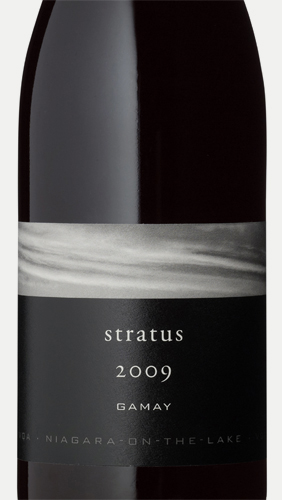 Stratus Gamay 2009 ($32, not released until October, 89 points) — Very different Gamay, to say the least. The vineyard was cropped to 1.2 tonnes per acre, picked on Nov. 12 and finished with 14.5% alcohol. It starts with a ripe and juicy nose of jammy red fruits, wild berries, smoke and wafting spices. Despite the late picking, there is still a pleasurable lean note on the palate that is bolstered by complex and ripe raspberry, currants, oak spices and firm tannins.
Stratus Gamay 2009 ($32, not released until October, 89 points) — Very different Gamay, to say the least. The vineyard was cropped to 1.2 tonnes per acre, picked on Nov. 12 and finished with 14.5% alcohol. It starts with a ripe and juicy nose of jammy red fruits, wild berries, smoke and wafting spices. Despite the late picking, there is still a pleasurable lean note on the palate that is bolstered by complex and ripe raspberry, currants, oak spices and firm tannins.
Stratus Red 2008 ($44, Vintages, 90 points) — The Stratus Red 2007 is a tough act to follow. But with Stratus’s strict regime of low yields, late picking (up to early December), hand sorting and meticulous blending from specific lots and barrels, the 2008 is a startling good assemblage in a so-so red vintage. Groux cut the yield in half compared to 07 and produced 60% less wine for the winery’s top cuvee. It amounts to a more traditional (OK, Cab Franc-dominated isn’t exactly traditional, but the end result is) Bordeaux-style blend with a beautiful nose of cassis, raspberry, red currants, tobacco leaf, cedar and vanilla wood. It is youthful in the mouth with evident tannins (so cellar a bit to round things out) but with succulent fruit, savoury-earthy notes, integrated spices and vanilla through a long finish. Drink now with food or hold in cellar for a few years.
Stratus Syrah 2009 ($48, winery in June, 90 points) — Another collaboration wine between Hobbs and Groux. This is a difficult varietal in Niagara in the best of vintages but Stratus crops to less than a tonne an acre and made only a paltry 72 cases from the ’09 vintage. It’s a Rhone-style Syrah with a smoky, bacon-fat and peppery nose bolstered by raspberry and other red fruits, earth and forest floor notes. It is rousing on the palate with firm tannins, structure, spice and firm acidity through the finish. Drink or hold.
Stratus Malbec 2009 ($48, winery in June, 89 points) — A thick, dense nose of brambly dark fruits, cassis, plum and lavish spices. It’s quite lovely on the palate, very reminiscent of Argentine-style Malbec, with ripe fruits, high acidity and firm tannins. Built for food and maybe just a touch of aging.
Stratus Cabernet Franc 2008 ($38, June in Vintages, 88 points) — This varietal is such an important component in the Stratus wine program. The 2008 was kept an extra year in bottle before being released in June to fully express itself. 2008 was a very cool vintage and the grapes for this wine were not picked until December with “the whole objective to get it ripe,” said Groux. “How can you you make a nice Cabernet Franc in a cool vintage?” was his challenge. The wine spent two years in 58% new oak barrels. The nose shows wonderful aromatics of cherry, raspberry, violets, herbs and fine oak spices. It’s quite typical of good Niagara Cab Franc with smooth fruit flavours, plush tannins, roundness in the mouth and persistent flavours through the finish.
•••
A couple of other wines tried recently:
Angels Gate Pinot Noir 2008 ($17, winery, winesplash.ca, 87 points) — The fruit for this Pinot spent 17 months in French oak. It possesses a nice cherry, vanilla, raspberry and cranberry nose with a touch of savoury herbs and spice. Oak and mineral notes emerge on the palate to go with sour cherry, spice and bramble notes in this nicely structured red.
Angels Gate Pinot Gris 2010 ($20, winery, winesplash.ca, 89 points) — This is a first-crop vintage for the new estate Angels Gate Gris, made in an elegant style with aging in neutral (older) oak barrels. It shows sweet apple, melon and peach fruit on the nose. I love the creamy feel on the palate with forward and ripe notes of delicious apple and tropical fruits. Soft and delicious white from a very good vintage.


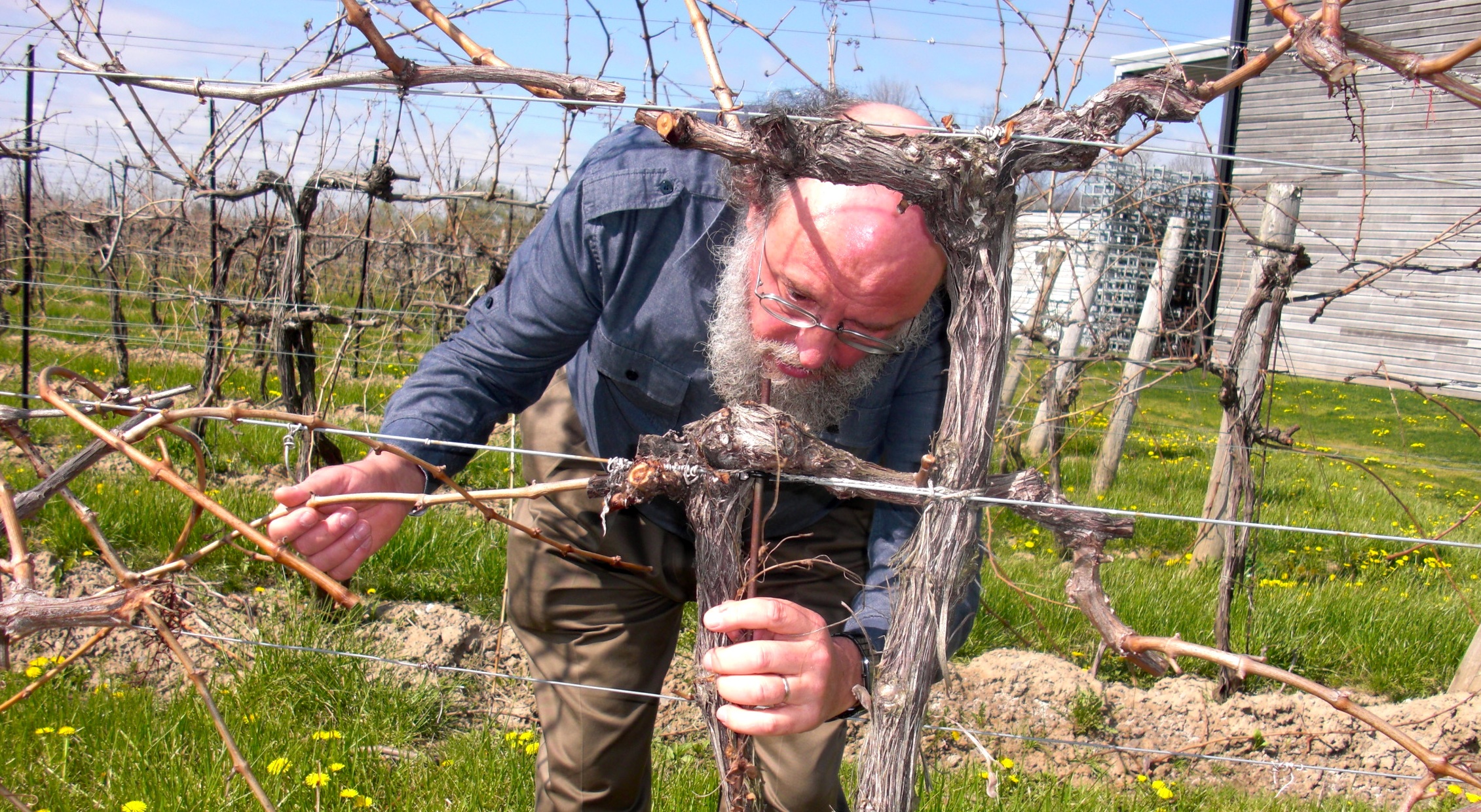



Comment here